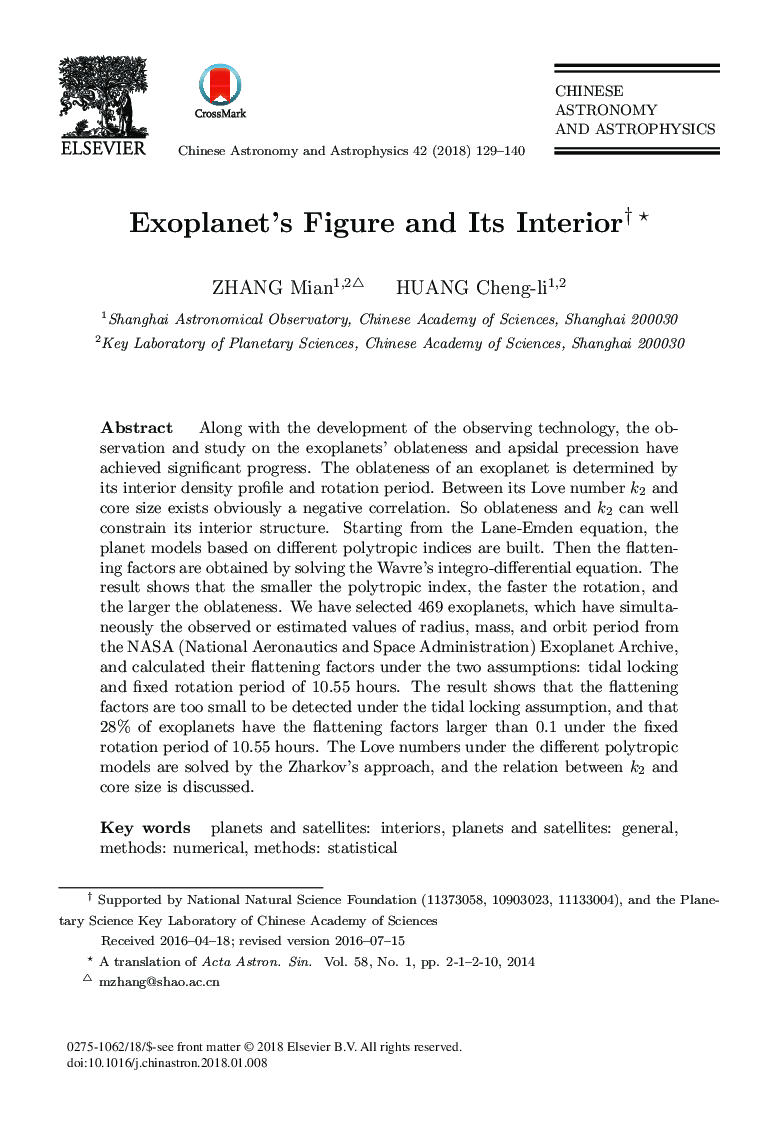| Article ID | Journal | Published Year | Pages | File Type |
|---|---|---|---|---|
| 8133163 | Chinese Astronomy and Astrophysics | 2018 | 12 Pages |
Abstract
Along with the development of the observing technology, the observation and study on the exoplanets' oblateness and apsidal precession have achieved significant progress. The oblateness of an exoplanet is determined by its interior density profile and rotation period. Between its Love number k2 and core size exists obviously a negative correlation. So oblateness and k2 can well constrain its interior structure. Starting from the Lane-Emden equation, the planet models based on different polytropic indices are built. Then the flattening factors are obtained by solving the Wavre's integro-differential equation. The result shows that the smaller the polytropic index, the faster the rotation, and the larger the oblateness. We have selected 469 exoplanets, which have simultaneously the observed or estimated values of radius, mass, and orbit period from the NASA (National Aeronautics and Space Administration) Exoplanet Archive, and calculated their flattening factors under the two assumptions: tidal locking and fixed rotation period of 10.55 hours. The result shows that the flattening factors are too small to be detected under the tidal locking assumption, and that 28% of exoplanets have the flattening factors larger than 0.1 under the fixed rotation period of 10.55 hours. The Love numbers under the different polytropic models are solved by the Zharkov's approach, and the relation between k2 and core size is discussed.
Related Topics
Physical Sciences and Engineering
Physics and Astronomy
Astronomy and Astrophysics
Authors
Zhang Mian, Huang Cheng-li,
